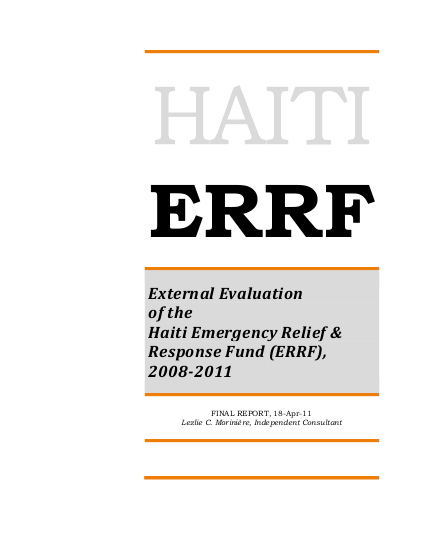
The Haiti Emergency Relief and Response Fund (ERRF) was activated in 2008 (with start-up funding by Sweden) with the goal of enabling the international community to better support local authorities by providing rapid and flexible funding to meet unforeseen needs in the event of natural disasters. It received approximately $85.2 million from more than 40 donors beginning August 2008. The evaluation found that against a background of overwhelming constraints, the main strengths of the Haiti ERRF include flexibility, proximity, approachability, alignment inside the cluster architecture (fostering coordination), visibility for the UN Office for the Coordination of Humanitarian Affairs, and ability to leverage $163 million in additional funds (indicating that approved projects were worth more than three times their weight). The evaluation found ERRF weaknesses to be bound more by the design of the mechanism than its manifestation in Haiti. They include internal contradictions such as the simultaneous emphasis on lifesaving and recovery/development and a design for field-based efforts outside the CAP, but subject to 50 per cent redirection by exceptional decisions made at a higher level. Other weaknesses are weak support to government and national NGOs and inadequate monitoring and communication.
